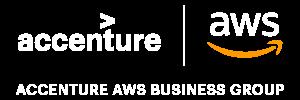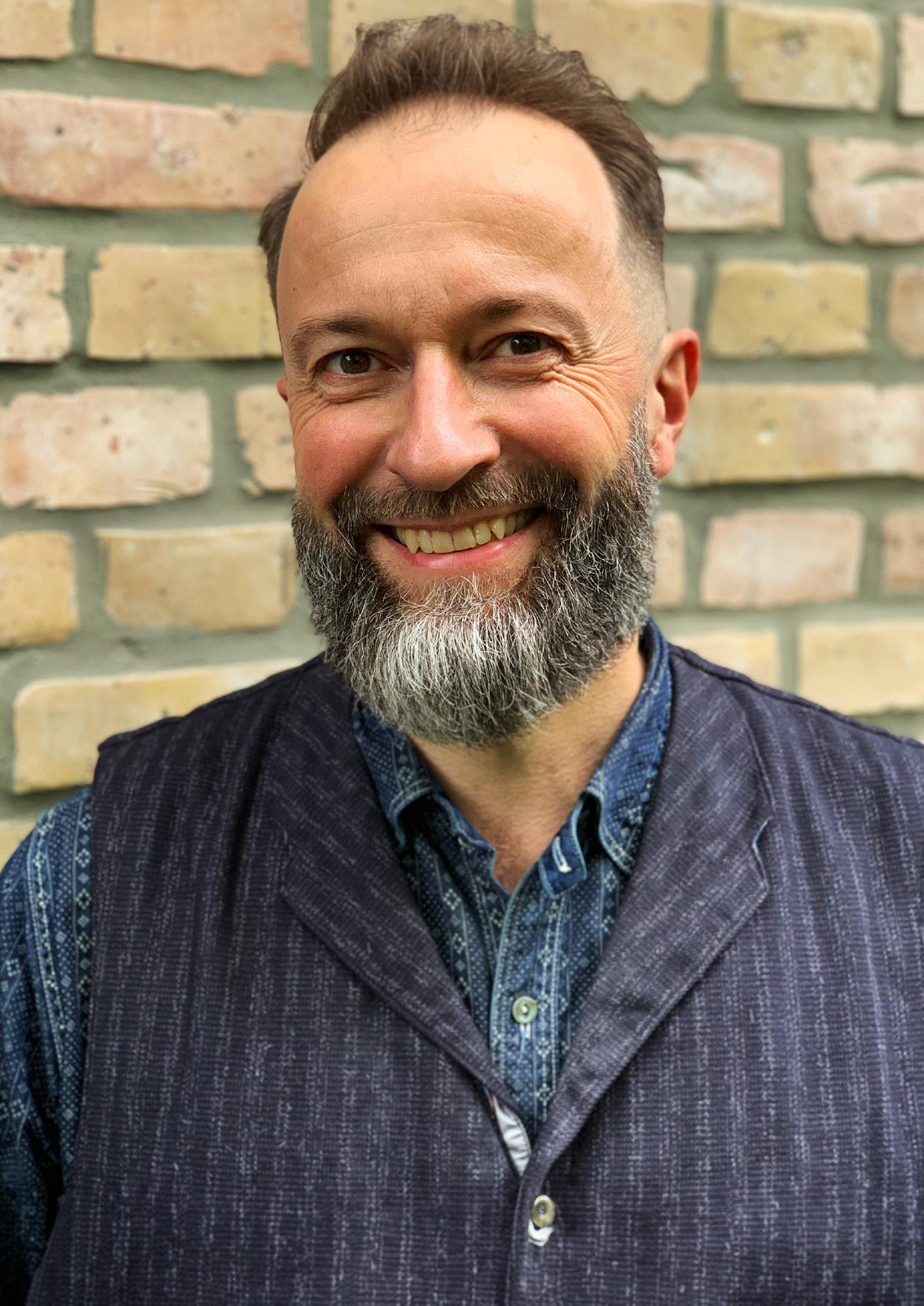ENTERPRISE ARCHI TECTURE CREAT ING SUSTA INABLE BUS INESS VALUE







Professional services leader Accenture has an extensive history of solving its clients’ toughest challenges by providing unmatched services in strategy and consulting, technology, operations, Industry X and Accenture Song.

As a leader in enterprise, application and systems architecture, Accenture’s Architecture Services division delivers strategic, tactical and operational enterprise architecture consulting services to help clients embrace their future.
Beginning his time with Accenture in 2009, Benjamin Zeller, Principal Director of Enterprise Architecture at Accenture DACH, describes the concept of enterprise architecture as the ‘tip of the spear’.
“We are a relatively small group of strategic technology futurists that work on the tip of the spear of the technology strategy and advisory business,” he comments. “We don’t start by talking about infrastructure or application or technology, but about the business, about capabilities, how the market works and how the industry mechanics function. Once we understand this, we use our experience and our skillset in a technology space to translate that into achievable and effective solutions.”
As Zeller describes, there are two major challenges to being a good enterprise architect. “One challenge is to combine deep technological understanding with the capability of strategic thinking and to tailor your communication to the audience and their specific needs,” he explains.
Accenture’s Benjamin Zeller on how enterprise architecture creates sustainable business value, facilitates collaboration and drives digital change

“Yes, we are always referring to the technology landscape but, when you talk to a team lead or an application owner, you need to do that in a completely different way compared to when you talk to the CFO

or the CEO. So that combination of interest and skillset for technology, and the ability to communicate tailored to a specific target group, and conceptualise in a specific context, is a very rare skill.”
“Of course, what I learned in university, 10 or 15 years ago, is still valid, but there are so many additional things that came along the way,” Zeller describes. “And of course, you have to be technologically fluent in those new aspects at the same time.
“That can only be achieved if you have an intrinsic interest in the topic and stay up to date with the latest developments.”
BENJAMIN ZELLER PRINCIPAL DIRECTOR ENTERPRISE ARCHITECTURE ACCENTURE
“The goal of Accenture is to help their clients be successful in what they’re doing now and be even more successful in the future”
TITLE: PRINCIPAL DIRECTOR
ENTERPRISE ARCHITECTURE
COMPANY: ACCENTURE
LOCATION: GERMANY
Benjamin Zeller is Principal Director of Enterprise Architecture (EA) at Accenture’s Technology Strategy and Advisory Enterprise Architecture job family and leads the EA Thought Leadership & Innovation department. He is experienced in strategic Enterprise Architecture
Management, tactical master planning, and operational IT architecture, particularly in the context of the implementation, transformation, and optimization of complex distributed system landscapes. Mr. Zeller has more than 15 years of international architecture experience across a variety of industries. Prior to this, he worked for nearly 10 years as a Software Engineer and Architect. He is a certified Accenture Master Enterprise Architectand AWS Solution Architect Associate.


AWS has partnered with Accenture for over 14 years through the Accenture AWS Business Group (AABG), which combines the resources, technical expertise and industry knowledge of both organisations into a unified team.

This unique collaboration enables enterprises to accelerate their pace of digital innovation and realise incremental business value from cloud adoption and transformation.

Built on over a decade of collaboration, the Accenture AWS Business Group (AABG) is dedicated to accelerating customers’ digital transformation and innovation
The Accenture AWS Business Group (AABG) combines the technical expertise and industry knowledge of Accenture and AWS through a unified approach.
Amazon CEO Andy Jassy coined an internal slogan “there’s no compression algorithm for experience”. Experience is at the core of the AABG; built on 14+ years of collaboration and more than 100,000 completed migrations to AWS cloud. Sara Alligood, Worldwide Leader of AABG at AWS, explains: “Our AABG team collaborates with enterprise customers to accelerate their digital transformation and innovation to deliver desired business value. “We provide customers with an end-to-end consultative approach, powered by joint investments in world-class accelerators, industry-proven expertise and digital skills.”

Continuous innovation requires strategic end-to-end planning, from boardroom engagement through to continued measurement and improvement.
The AABG brings use-case expertise to design and build end-to-end solution roadmaps unique to each client’s requirements.
To support this, the AABG recently launched ‘Velocity’, a continuous innovation engine that allows customers to choose and deploy
repeatable solutions aligned to their roadmap, using pre-configured blueprints to remove timeconsuming labour and cost-intensive work.
“If you think of Velocity as a foundational layer,” adds Alligood, “we’re then able to focus on industry-specific expertise to design and build the end-to-end solution that our customers need.”

The AABG continues to make significant investments into industry solutions built on real use cases, unique industry challenges and white space opportunities, developing more than 40 differentiated solutions across industries including insurance, energy and utilities, life sciences, banking and manufacturing. Each solution is developed to address niche or unique opportunities for customers to innovate within their industry and, because they are built on Velocity, can be deployed at speed. Alligood concludes: “Our portfolio of industry solutions covers all stages of a customer’s innovation journey, built by industry experts with those industry use cases at the heart of what we’re doing.”
Learn more


Accenture has been a leader in strategic enterprise, application and systems architecture for nearly 30 years, but as a company, it is, of course, much broader than enterprise architecture. “At Accenture, our goal is to help our clients be successful in what they’re doing now and be even more successful in the future by creating tangible value at speed and scale,” Zeller describes. “We want to help them stay relevant in the marketplace, keep up with change, find effective solutions for the problems at hand and implement precautionary measures to better anticipate risks and prevent them from becoming issues.”
Accenture achieves these goals by providing an extensive combination of
“Not only do you need to know the business and understand how it works, but you also need to have the ability to look at a complex problem from a holistic perspective”
BENJAMIN ZELLER PRINCIPAL DIRECTOR ENTERPRISE ARCHITECTURE ACCENTURE
strategic capabilities with its global network of technology expertise, strong ecosystem relationships and ability to innovate, uniquely positioning it to add sustainable business value for clients.
“We have the full spectrum of technological capabilities that are required to drive change and create sustainable business value, ranging from mission-critical core platforms to market-differentiating applications based on cloud-native services,” Zeller asserts. “We also have a broad variety of specialists in certain areas like Amazon, SAP and Microsoft, where we are one of the biggest implementation partners globally.”
Furthermore, Accenture offers a range of services where it acts as a continuous partner to its clients. “From finding ideas and developing concepts, to implementing

and operating, we offer our clients a full breadth of services. So, when I do a project as a strategist, I do it as a strategist and not because I want to sell the next great transformation project,” Zeller adds. My incentive is not the big projects that come my way, but the success and the persuasiveness of my concepts which I develop in close collaboration with my clients.”
As Zeller explains, Enterprise Architecture can be used to break down boundaries between business and IT – enabling organisations to reap the benefits.
“We work for large, multinational enterprises, and there you can still find those boundaries between business and IT.
In some cases, they don’t like to talk to each other and when they do, it’s not in a very effective way or even inefficient. Also, there are boundaries within IT between the developers and the operational staff.”
These boundaries, from Zeller’s perspective, are purely historically based and arbitrary. “In most cases, there’s no justifiable rational reason for those boundaries. In order to tear down those boundaries and make those boundaries disappear, you have to facilitate collaboration. And in order to facilitate collaboration, you have to communicate, and you have to enable people to understand each others’ concerns.
“Not only do you need to enable a business analyst on the IT side to understand the business strategy, but you also need to enable a business strategic decision maker to understand the decision mechanics of an IT platform. So, you have to ensure understanding on both sides.
“This requires being versatile and fluent as an enabler and facilitator of change, both as a good technologist and as a good business strategist.”

This, Zeller explains, is the core job description of an enterprise architect, to be fluent in both worlds and as he describes ‘ride the elevator’.
“If you imagine a company with a C-suite in the penthouse and the IT department maybe in the basement, and then the business department somewhere in between, enterprise architects are able to ride the elevator and they have the capability to exit the elevator on every floor. And they are also able to move around on that floor in a very free manner.
“They do have their own office somewhere. Mostly it’s on the floor where the IT department is, but they’re barely in their office because they’re constantly sitting
in other people’s offices to communicate, collaborate, bring together and enable people – riding the elevator up and down.
“I see this really as one of the key differentiators of enterprise architects because they bring together those two worlds in such a strong way.”
Partnership with AWS and the Accenture AWS Business Group
Accenture has a broad range of important partnerships and, as Zeller describes, its relationship with Amazon Web Services (AWS) is one of them.
“At Accenture, we are solution agnostic. We believe it is best for our clients to pick the best solution for their specific situation.
That, of course, requires that we work together with strong partners such as SAP, Microsoft, Google and AWS.”
Together with AWS, Accenture has constitutionalised an organisational unit known as the AABG – the Accenture AWS Business Group.
“AABG is an organisational unit comprising closely collaborating employees from both AWS and Accenture, focused explicitly on delivering AWS services to our clients where they fit best,” Zeller explains. “With its mature service offering, AWS and Accenture can provide our clients with excellent support

“We work for a number of large, multinational enterprises, and there you still find those boundaries between business and IT”
BENJAMIN ZELLER PRINCIPAL DIRECTOR ENTERPRISE ARCHITECTURE ACCENTURE
for numerous challenges, whether it is IT strategies or enterprise architecture projects. In addition to our strong partnerships, we also focus on building the skills within our Accenture universe ourselves.”
As a result of the partnership with AWS, the two companies have developed a number of offerings. One of these, the Velocity platform, is a continuous innovation engine that can help clients add new cloud innovations up to 50% faster. Security, repeatability, automation and flexibility are all built-in with industry-specific solutions at its core.

BENJAMIN ZELLER PRINCIPAL DIRECTOR ENTERPRISE ARCHITECTURE ACCENTURE
“From generating ideas and developing concepts, to implementing and then operating, we offer our clients a full range of services”
Providing companies with the speed, resilience, scale and agility to remain relevant, Zeller describes the platform as a ‘win-win’.
“The client gets the best benefit, AWS is being chosen as the long-term cloud partner and we as Accenture can offer the Velocity engine and the surrounding consulting skills.”
With organisations facing ever-increasing challenges globally, from pandemics to conflicts, Zeller believes that issues such
as sustainability will be a topic that continues to gain traction.
For example, Zeller describes the substantial increase in CO2 certificate prices, which represent the amount of emissions for which financial responsibility is assumed through support for climate protection projects.
“A few years ago in Central Europe, national governments debated price increases for those CO2 certificates that the governments thought would be significant. These discussions were intense, but then the pandemic struck, followed by the war in Ukraine. In a remarkably short time, the prices that many had feared would cripple the economy surged by 1.5 to 2 times. It’s a testament to how swiftly history can unfold and disrupt business. Many companies are now grappling with these changes, often unprepared because they hadn’t anticipated such shifts.”
As a result, ways must be found to implement holistic business and IT sustainability, enabling companies to have cost-efficient IT departments and run their company in a cost-efficient way.

“Sustainability can be approached on a micro level, focusing on relatively isolated optimisations that contribute a small piece to the bigger picture. However, to truly implement sustainability, a holistic perspective on a company and its ecosystem, the entire end-to-end value chain and the corresponding sustainability drivers is required.
“If you ask the questions of how to make IT greener, how to make internal business operations greener and how to make supply chain or even suppliers
greener, you need specific technological solutions at hand. This is what enterprise architects bring to the table because they have an overview of available solutions and know what works and what doesn’t.
“Business fluency and an understanding of how a business works, as well as the ability to have a holistic perspective on a complex problem, is crucial. It is important to not only look at one aspect, but also consider how that aspect might influence another aspect. That is also something that enterprise architects are trained for like nobody else. Therefore, I believe that the success of holistic sustainability will be a discipline of enterprise architecture.”
Another widely debated topic is the impact of generative AI. When it comes to AI, Zeller explains that there are two major questions to ask.
“First thing, how can we use generative AI to be faster and more efficient for our client? That is something we can answer after a relatively short time in the future thanks to GenAI.
“And then, there is the question of how we can use generative AI to be more creative, more innovative.
“Those questions help us to see what’s there already, get a holistic perspective and get something new out of it. I don’t yet have the complete set of answers to how generative AI is going to help us there, but it’s going to be relevant for our work as it is about being creative, being innovative and solving the intellectually demanding problems between technology, business and communication that others have a hard time solving.”

